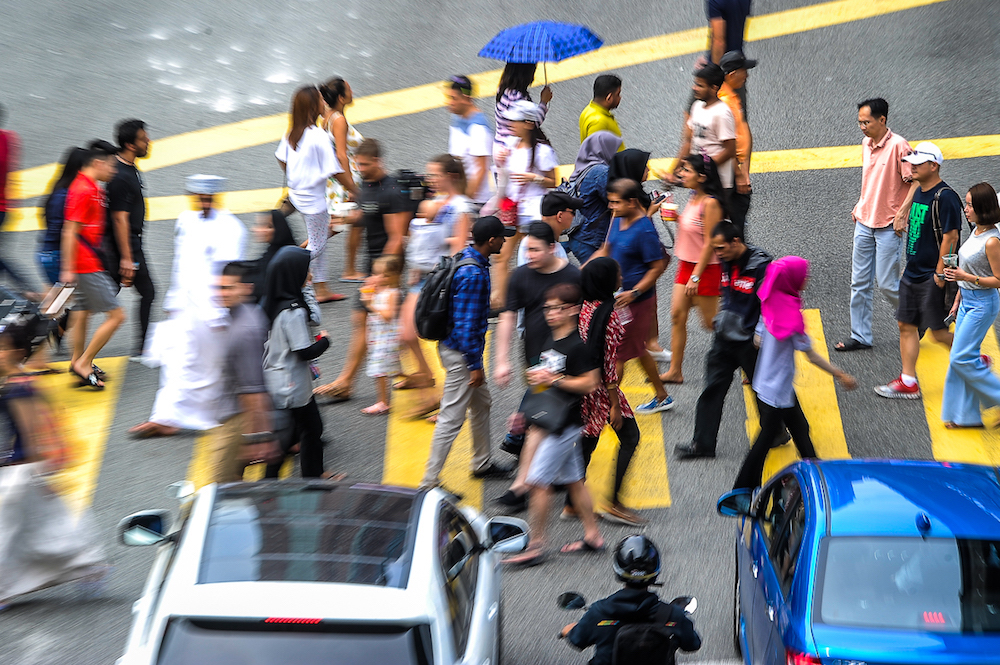KUALA LUMPUR, June 25 — The number of poor Malaysians is higher than official figures if the relative poverty line reflects today’s reality, Khazanah Research Institute (KRI) said.
The research house wrote in a June 11 note on its 2018 report on the state of Malaysian households that the number of relatively poor households rose to 1.54 million in 2016 from 1.08 million in 1995, after it raised the threshold to measure incidence of relative poverty to 60 per cent of the median household income.
Currently, the government defines relative poverty as families earning between the official poverty line income (PLI) and below the 50 per cent national median household earning, a baseline KRI said was still the lowest among other countries with similar median income level.
“Our own calculations using 60 per cent median show a slightly higher number (of relative poverty households) as we use a higher percentage and include also those below the PLI,” the note said.
Critics would likely cite the findings to reaffirm what they have long believed: That Malaysia’s impressively low number of poverty incidence masked a bleaker reality that belies its much-touted success.
By setting the bar unrealistically low, previous administrations claimed it achieved astounding success in eliminating absolute and hardcore poverty. Up until last year, poverty was only measured through the PLI and the consumer price index.
In 2014, the poverty threshold was RM930 in peninsular Malaysia, RM990 in Sarawak and RM1,170 in Sabah and Labuan. Household incomes of below RM580 in peninsular Malaysia, RM660 in Sarawak and RM710 in Sabah and Labuan were categorised as “hardcore poor”.
The Barisan Nasional (BN) administration under then prime minister Datuk Seri Najib Razak later adopted a broader classification system after critics said the federal poverty guidelines at the time were obsolete.
To simplify it, the Najib administration defined households earning below RM4,360 as the bottom 40 per cent (B40), RM9,619 as the middle 40 (M40) and above that as the top 20 (T20), but keeping the PLI and the CPI as the official poverty measurement systems.
Loopholes
Critics have long warned about the severe limitations of the two indexes in measuring a complex term like poverty.
Because the core idea of the PLI is measuring cost of basic needs against household income, the system — despite having been updated to incorporate calculations of each household, age distribution, gender, and regional differences — remained impervious to other crucial poverty indicators.
Detractors said BN politicians often exploited the loopholes to their advantage by citing the low number of hardcore poor as a sign of the former ruling coalition’s success in eliminating poverty.
Measured through the flawed system, incidence of poverty supposedly decreased to just 8.5 per cent in 1999 from 37.4 per cent in 1979. By 2016, BN leaders gloated about how the number of hardcore poor had dropped to just 0.4 per cent.
Relative poverty is a concept only recently introduced, after Pakatan Harapan (PH) took over in last year’s election as a response to the growing call for the outmoded PLI to be replaced with a more efficient and realistic poverty classification system.
Relative poverty is defined as conditions in which people lack the minimum amount of income needed to maintain the average standard of living in societies in which they live.
Under the Mid-Term Review of the 11th Malaysia Plan, the PH administration adopted the concept but only as a complement to the PLI. At present, relative poverty is used to define “low income households” as a subgroup of the B40.
KRI said while the cut-off point to define relative poverty is subjective, it opted for the upper bound within OECD range to best reflect the country’s climbing living standards.
Misguided policies
In 2016, the median monthly household income was RM5,228, which makes the median earnings for those that fall under the relative poverty category RM2,614. This account for 15.5 per cent or 1.08 million of total households, according to official data.
The figure significantly changed after KRI raised the income band, with nearly half a million additional households falling under this group in 2016 even when the percentage of relative poverty incidence decreased 4 per cent from 26.2 the same period.
This, the think tank concluded, showed policymakers have failed to adequately address the poverty conundrum because past and existing solutions are based on a flawed classification method.
KRI said while the shift towards relative poverty may be necessary given the low rates of absolute poverty, the official guiding ideas to define the B40 remains problematic because it uses the two terms loosely and interchangeably.
“This is because it treats relative poverty as absolute poverty in terms of extending social assistance and implementing welfare programmes,” the note said.
The think tank said it hoped the findings will act as an urgent reminder to government leaders of calls to rethink its approach to welfare assistance, starting with changing how they think about what constitutes poverty.
“In balancing between absolute and relative poverty, we may want to ask Malaysians what they think,” the note concluded.
“But before asking, we may want to get our concepts clear and our questions right.”



















